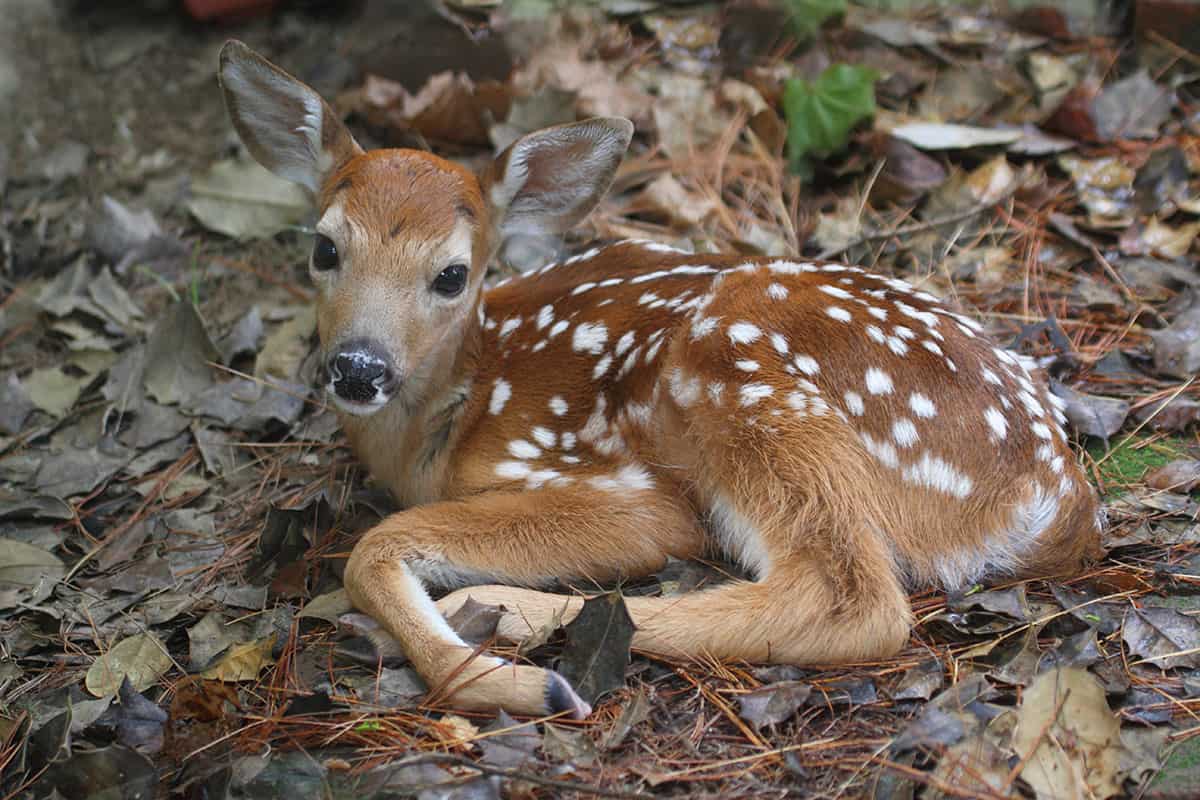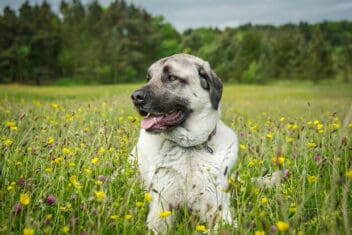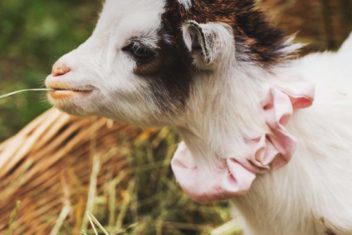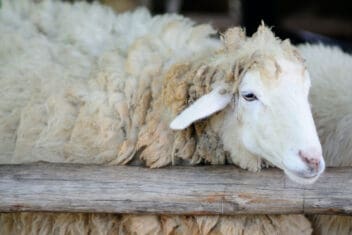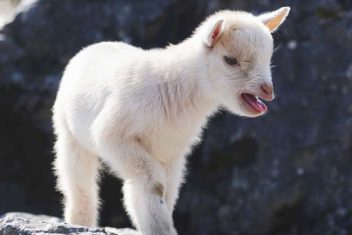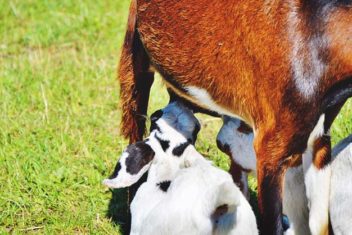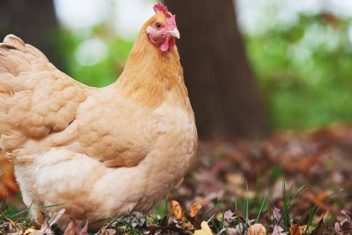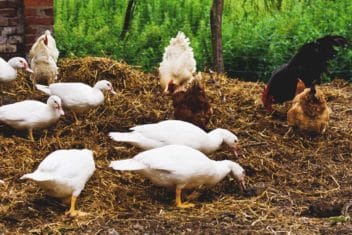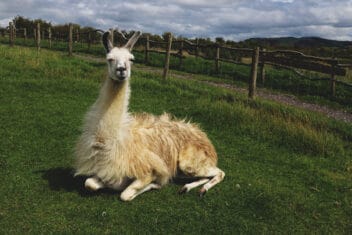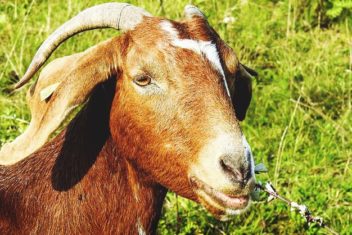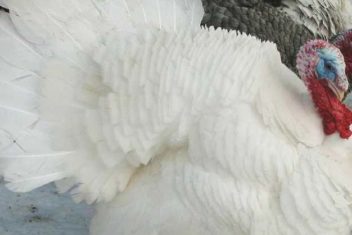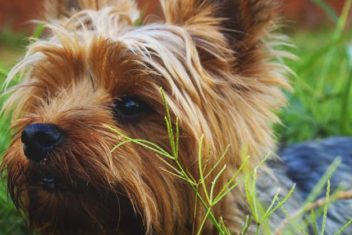Farms, homesteads, and urban gardens are full of wildlife. It’s exciting to observe it and know you are part of that natural world. But what happens a wild baby animal is abandoned or injured and needs intervention?
There may be times when you find a baby animal on your homestead that you think needs help. You come across a fawn in the hayfield or your cat brings you a baby bunny as a present. Maybe there is a baby bird hopping around your yard.
Here’s how to handle the situation the right way, which often includes reaching out to a wildlife rehabilitator.
What Are Wildlife Rehabilitators?
As a homesteader, organic farmer, and environmental educator, I have always felt a connection with the wild animals who live on my farm. So, seven years ago, I became a licensed wildlife rehabilitator.
Wildlife rehabilitators are people trained to treat and care for orphaned and injured wildlife. These animals are not pets. They’re released back into the wild when they’re able to survive on their own.
Some wildlife rehabilitators work for parks and environmental education facilities. Many, however, work out of their homes or off their farms.
Wildlife rehabilitators are not the same as pest removal and can’t come to your home to get rid of an animal you don’t want around. That is a whole different license.
However, often rehabilitators like myself will help you with humane solutions to your pest problems. I frequently help people with ideas to keep their chickens safe and protect their gardens.
How Do I Find A Wildlife Rehabilitator?
You can find a wildlife rehabilitator by using an app called Animal Help Now. This app works on your phone or desktop and locates rehabbers in the USA. You just put in your zip code, and it will give you the rehabilitators closest to you.
You can also call you state department of Fish and Wildlife as they’re often the government agency that licenses wildlife rehabilitators.
Does It Need help?
The first thing you need to do is to ascertain if the wild baby animal is in actual need of intervention because it has been abandoned or hurt. Sometimes mothers leave baby animals alone for a while as a normal part of their lives.
Some ways to tell if the animal needs help
- The baby is walking aimlessly and crying out or calling.
- They’re covered with fleas or other parasites.
- The baby seems dehydrated or emaciated.
- It has been hit by a car on the road or attacked by a domestic pet.
Helping Deer
Animal lovers commonly find wild baby deer and worry that their parents have abandoned them. You know – that cute little spotted fawn that is laying down in the hayfield.
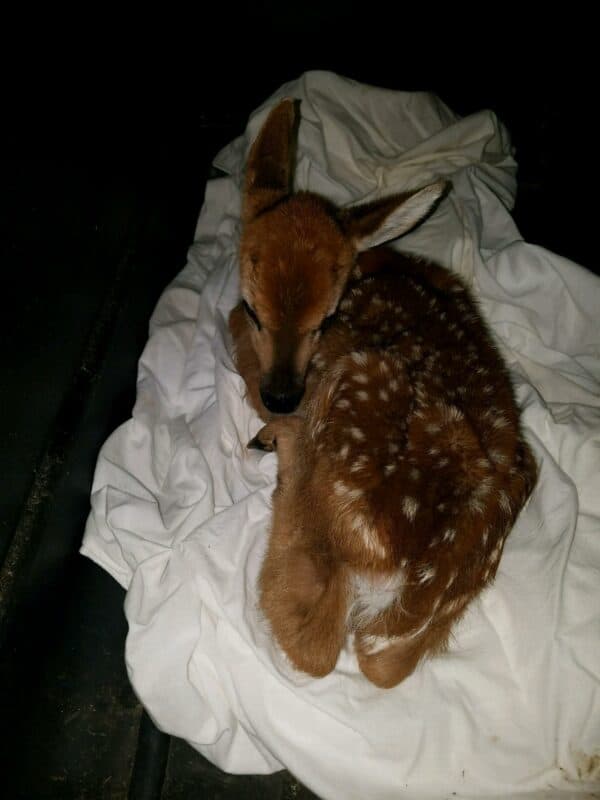
Deer mothers naturally leave their fawns and go off to forage. The fawn is born with little scent and is not strong enough yet to keep up with mom. So, she hides them.
Then mom leaves the baby because she thinks the bad guys (coyotes, dogs, bears) will follow her and leave the baby alone. She will forage nearby and then go to the baby at dawn and dusk to nurse them.
The first thing I tell everyone who calls about an orphaned fawn is to watch the baby for 24 hours. Ninety percent of the time, mom comes back, feeds the baby, and moves them to another location.
If that doesn’t happen, call a wildlife rehabilitator.
Helping Rabbits
Rabbits are another animal that doesn’t stay in the nest all day but goes out to forage. Many people come across rabbit nests as they are mowing the lawn. As long as the baby rabbits are not injured, just cover them back up in the nest.
If you are worried that baby rabbits have been abandoned, you can lay some twigs or yarn over the nest in a criss-cross pattern. You’ll know if mom has come because the pieces get moved around when she enters the nest.
If a cat or dog catches a baby bunny, it needs your intervention. Cats have a lot of bacteria in their mouths and can easily cause infection in the young rabbit.
Don’t try to treat the rabbit yourself. Rabbits are highly sensitive to medicines, and a rehabber knows best what they can metabolize.
Suppose you find a young rabbit whose eyes are open and has erect ears and is nibbling on grass. That juvenile is probably weaned. Rabbits wean their young at four weeks, and while they are still quite small, they can survive independently. This animal doesn’t need our help.
Helping Turtles
It’s not always baby wild animals that have been abandoned or need help. You have probably helped an adult turtle cross the road before and that’s a good thing. Here’s what to do if you come across a turtle crossing the road.
- Pull over when you can safely do so.
- Pick up the turtle by placing your hands around the rear of the turtle’s body.
- Move the turtle in the direction it was going.
- Place it off the road and wish it well.
- Wash your hands.
Never remove a turtle from an area because you think they are not in suitable habitat. Turtles have a strong homing sense, and they can die just trying to find their way back home.
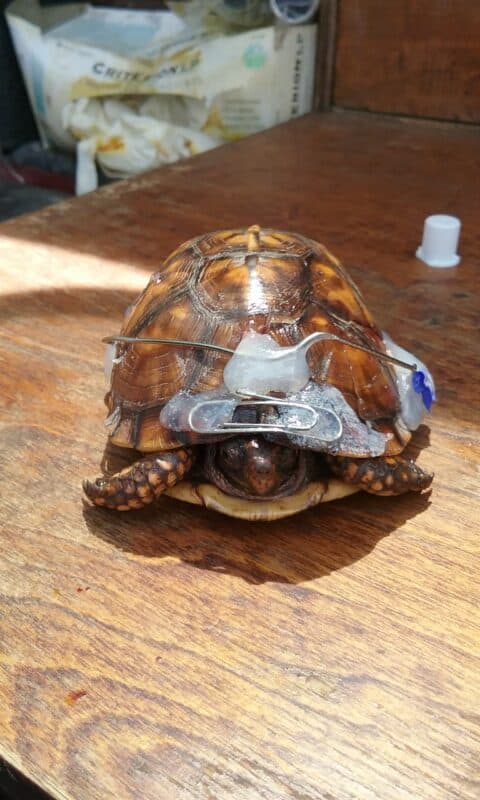
Large Snapping Turtles
If you came across a large snapping turtle in the middle of the road you need to use a bit more care. Snapping turtles have long necks and they will reach out and bite you.
This is a fabulous video from the Toronto Zoo that shows how to move a snapping turtle safely.
Turtles with Injuries
If you find a turtle that has been hit by a car or farm machinery, call a wildlife rehabilitator. Rehabbers can often glue the turtle’s shell back together, and it will survive.
Turtles feel pain when their shell is injured (some people don’t know this), so place it in a box surrounded by a rolled-up towel to prevent movement.
Helping Squirrels
Tree work is often the culprit for orphaning baby squirrels. You may be having an old tree taken down before it falls, or you are harvesting firewood.
That work can cause adults to abandon baby wild animals such as squirrels. Babies can also get injured as the tree falls.
Squirrels have babies in the spring and the fall. One way to avoid possibly injuring babies is to do your tree work in summer after babies have left the nest.
If you find a baby squirrel or two on the ground and they’re warm and moving, you can try to locate the nest and put them back in.
Sometimes squirrels get hurt when they fall from the tree. If you find a young squirrel with blood on their face or coming from the mouth or nose, they need immediate intervention.
Alternately, if you have harvested or transplanted a tree on your homestead and find baby squirrels, you can first try to see if mom will come back for them.
If she doesn’t, use the Animal Help Now App to locate a licensed wildlife rehabilitator.
Helping Birds
Most animal lovers have seen a wild baby bird that appears to be abandoned and alone on the ground.
But that’s not always the case. Baby birds fall into two categories: fledglings and nestlings.
A nestling doesn’t yet have feathers – just a down covering or even bare spots. They’re still totally dependent on the parent birds. Sometimes they fall out of the nest or are knocked out during a storm.
If you find a nestling, try to put it back in the nest. If the nest is high up in the tree, you can put it in a small box with some straw or clean grass and hang it box from a tree branch.
Observe to see if the parents come back for it. If you don’t see any parents, then call a bird rehabilitator.
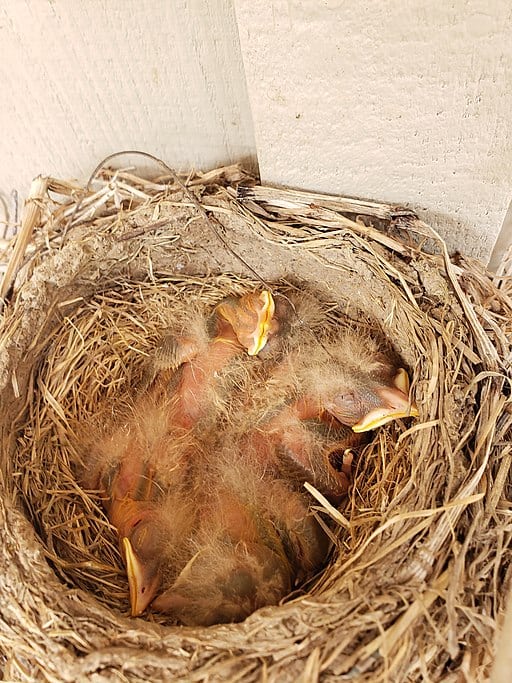
Fledglings are young birds with most of their feathers. They may still have some down on the head or chest, but their wing feathers are grown.
Fledglings leave the nest as part of their natural development. They need to have room to spread their wings and strengthen those muscles.
If you see a fledgling hopping along the ground, leave it alone. Keep your dogs and cats away from the baby. It takes about a week for it to become a good flyer and get away from danger.
Like bunnies, if a cat catches a baby bird and injures it, it should go to a wildlife rehabilitator for medical treatment.
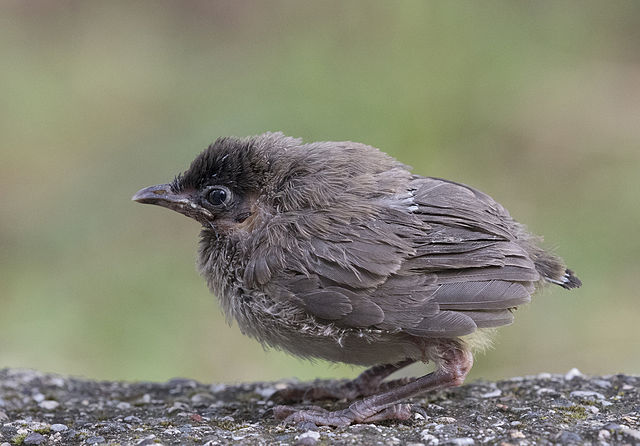
Helping Opossums
The opossum is a unique animal being the only marsupial in the US. You want to have them on your farm because they eat thousands of ticks and many garden pests.
Opossums, as we all know, are rather dumb about crossing roads. If you see a hit possum on the road is check for babies. Wearing gloves, turn the mother over and check her pouch for movement.
If she has babies, you can scoop up the possum, place it in a box and get to a rehabilitator.
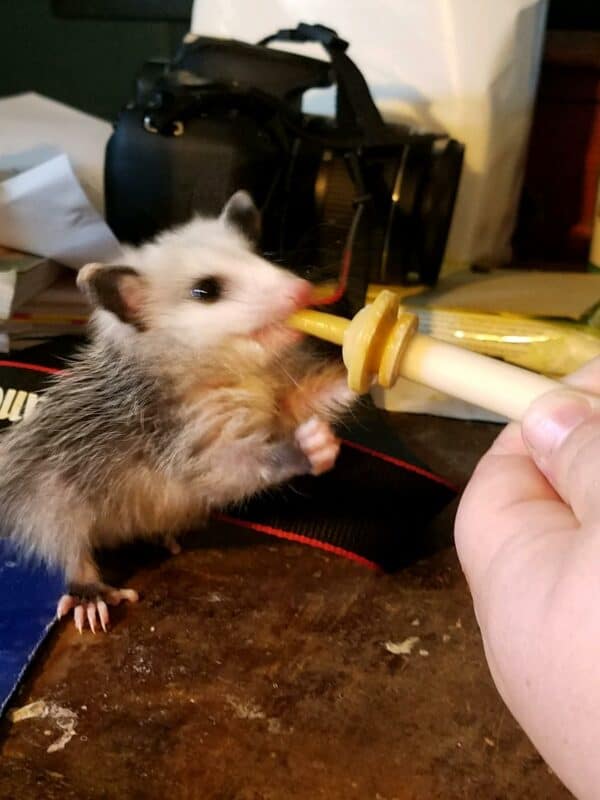
Wildlife as Pets
Wild animals don’t make good pets. I know, it’s temping to see a wild baby animal that has been abandoned and take it home to raise.
But unlike dogs, they haven’t had thousands of years to get acclimated to living with humans. They still resort to their instincts when afraid or angry.
Wild animals often develop “bad” habits as they grow. When they mature, they naturally start to display defensive measures and may start to bite or scratch.
They’re also not always the cleanest of animals and may mark their territory by going to the bathroom in food dishes, beds, or wherever they want. These are all normal behaviors for the animal, but we see them as bad.
Most states have laws against keeping wild animals. In my state of Kentucky, the fine is $750 and possible jail time. But the sad news is that the conservation officer will most likely euthanize the animal on the spot if you get caught.
Don’t bend the law or put an animal’s life at risk because you want an exotic pet.
That said, most states have a good Samaritan clause that if you find an orphaned baby you have 24 hours to place it with a wildlife rehabilitator.
What To Do While Waiting
While you are waiting to hear back from a licensed wildlife rehabilitator there are several things you can do.
Put the baby in a box in a quiet location. This is not the time to take selfies with an animal. The baby is under stress, and you don’t want to cause further harm.
Place a heating pad on low under the box. If you don’t have a heating pad, you can heat up a bottle of water and wrap it in a towel. Make sure it won’t roll over onto the baby.
DO NOT give any food to baby wildlife, even if it has been abandoned or injured. This includes any milk or formulas.
I know it’s tempting to help, but even when you give them dehydrated animal food or formula, their intestines seize up and they can die. A rehabilitator must rehydrate them first.
Do follow the directions and requests from your rehabber. They are trained in these situations and know what to do.
